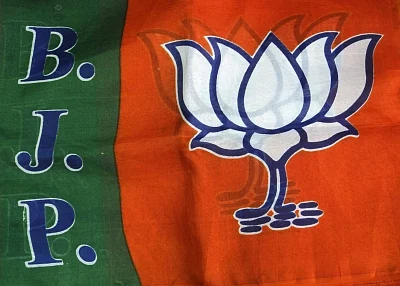By Rashmi Saksena
The BJP has made a valiant attempt to project a 'win in the face of electoral defeat in the Madhya Pradesh, Rajasthan and Chhattisgarh assembly polls. The proclaimed 'victory' lay in it finally delivering a "Congress-mukt" (Congress-free) northeast, the BJPs much trumpeted agenda after its 2014 triumph. As Mizoram rejected the Congress, the Grand Old Party, which had held sway in the region for decades, was left with no government in any of the eight northeastern states.
Why is the BJP leadership so intent on projecting its northeastern association and achievements? The main reason is that a "Congress-free" northeast brings the BJP (so it thinks) a step closer to its goal of creating political space for itself in a strategically critical region that borders four countries - China, Myanmar, Bangladesh and Bhutan - and is the gateway to Southeast Asia that is so critical to the success of the government's "Act East" policy. To achieve this, the BJP has so far worked the strategy to arrive at an understanding and stitch an alliance with regional parties in Assam, Arunachal Pradesh, Mizoram, Manipur, Meghalaya, Nagaland, Sikkim and Tripura. And it is paying off. Almost.
The BJP has its own Chief Minister in Assam, Arunachal Pradesh, Manipur and Tripura. It has a presence in the Meghalaya government and a presence of sorts in Nagaland as well as Mizoram. In Arunachal Pradesh and Manipur, it is not through the ballot but by sheer machinations that the BJP has leveraged itself itself to power. That leaves Sikkim as the last frontier the BJP needs to conquer in the region. Sikkim - ruled by the regional Sikkim Democratic Front (SDF) that is in power for a record 25 years under its charismatic Chief Minister Pawan Chamling - is the only northeastern state where the BJP is not in a coalition or alliance.
For the BJP, it is politically and strategically important to have a presence and understanding of sorts with the regional parties in the eight northeastern states as it prepares for the 2019 Lok Sabha elections. The states together hold 25 Lok Sabha seats. Largely due to fiscal and security dependence, the ruling parties of the northeastern states support whichever party is in power in Delhi. An exception was in 1977 when the Congress government in Assam did not join the Janata Party central government. On the other hand the Arunachal Pradesh Congress merged with the Janata Party. The BJP, after losing the Hindi heartland in the 2018 assembly polls, would like to at least ensure the support of the 25 MPs from the northeast.
BJP leaders themselves accept the fact that the party has no roots in the northeastern states. The BJP has met electoral success in assembly elections there only by riding alliances and understandings it has formed with regional parties. Starting with the latest poll outcome in Mizoram, it is the Mizo National Front that now controls the state (26 seats of 40). The MNF has returned to power after ten years of Congress rule with a lone win by the BJP's B.D. Chakma, an old Congressman who, like many in the region, deserted the party after being ignored by the central leadership.
The BJP is seeking to bag at least one seat in the 32-member Sikkim assembly in the elections that are to be held with the Lok Sabha polls. The party leadership at the local level as well as BJP National General Secretary (Organisation) Ram Lal had reached out to the SDF but was rebuffed for both political and ideological reasons. Minister of State for Home Kiren Rijiju, the party's northeast strategist who is from Arunachal Pradesh, and Ram Madhav, the BJP's National General Secretary, are now reportedly backing football star turned politician Bhaichung Bhutia in Sikkim who is seeking to emerge as a political rival of the SDF.
The SDF supports the Narendra Modi-led government at the Centre but is not willing to yield space to the BJP at the state level. The SDF leadership, as it prepares for the electoral battle ahead, has categorically stated that it will have no alliance with or take the support of the BJP. Chamling, the longest serving chief minister in the country, would instead like to profile himself as one free from the clutches of any national political party. Sikkim has historic reasons to keep a distance from national parties.
So why is Sikkim bucking the 'rising BJP' trend in the northeast? One of the primary reasons is that the state is ruled by a powerful Chief Minister in Pawan Chamling, who has worked hard to keep "communal and negative elements" at bay, as he said recently in a rally in South Sikkim. Dislodging the SDF from power - despite the strong incumbency factor - is not easy because of the SDF's sound record in governance on virtually all fronts - from environment and sustainable development to gender equity, health and education. Chamling has also delivered in maintaining peace. Darjeeling-like violence in a sensitive border area is the last thing a central government will want.
But BJP wont stop trying and Bhaichung Bhutia's Hamro Sikkiim is seen as a BJP proxy, though it is hardly seen to be making a dent despite getting a fair amount of media attention because of his celebrity status. In Sikkim the SDF has 29 of the 32 seats while its rival the Sikkim Krantikari Morcha has two. The Bhutia-led Hamro Sikkim is yet to open its account in the state assembly.
(The author is a well known political commentator. The views expressed are personal)
--IANS
rashmi/vm
(This story was auto-published from a syndicated feed. No part of the story has been edited by The Quint.)
(At The Quint, we question everything. Play an active role in shaping our journalism by becoming a member today.)
